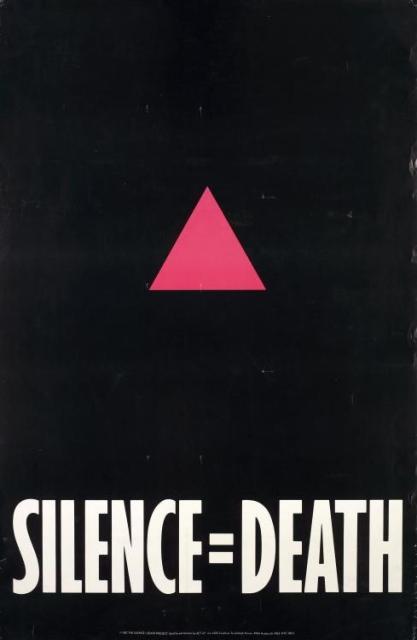
Silence = Death Project
“Silence = Death” poster
New York, 1987
ACT UP New York Records, Manuscripts and Archives Division
Sexual and Reproductive Freedom
U.S. obscenity laws like the 1873 Comstock Act are frequently cited to censor material that discuss themes of sexuality and reproductive rights. This section delves into the ways social and governmental entities have used obscenity laws to harm communities and prevent the sharing of information.
The legal censoring of material that discussed women’s reproductive rights began with the Comstock Act, which heavily restricted access to information on birth control, sexual protection, and sexually transmitted diseases. Items in this section, including the sketch published in The Masses (1915), show the extensive impact of these laws on people’s everyday lives and intimate choices.
In parallel, the LGBTQ+ community has been, and continues to be, targeted with similar obscenity laws. The censoring of material with gay and lesbian themes is represented through items like the Dorian Book Quarterly (1962) and ACT UP’s “Silence = Death” poster (1987). The need for such publications and activism continues to be a subject of life and death, poignantly demonstrated by the censoring of AIDS-related information that proved lethal for many members of the LGBTQ+ community in the 1980s and 90s.
Material on reproductive rights and sexuality, together with themes of racism, continue to be targeted for censorship. The restrictions in the 1873 Comstock Act on mailing medications related to abortion have never been repealed, though they were no longer enforced after the Supreme Court protected the right to abortion in 1973. Today, opponents of abortion seek to revive the 1873 law to impede the procedure across the country, even in states where it remains legal. Libraries play a crucial role in providing access to the types of information the Comstock Act sought to ban, in a safe and nonjudgmental environment.






